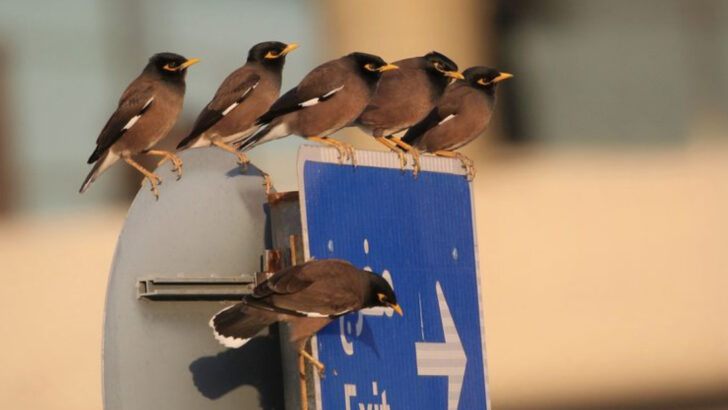Some animals don’t just adapt—they take over. From tiny hitchhikers to runaway pets gone wild, these invaders have muscled their way into places they don’t belong—and they’re not backing down. They outcompete locals, wreck ecosystems, and multiply like there’s no tomorrow. People try traps, fences, even full-on eradication campaigns… but the animals? They just keep winning. These 17 invaders aren’t just surviving in new territories—they’ve made themselves right at home. Whether by accident or design, they’ve turned entire environments upside down.
European Starling
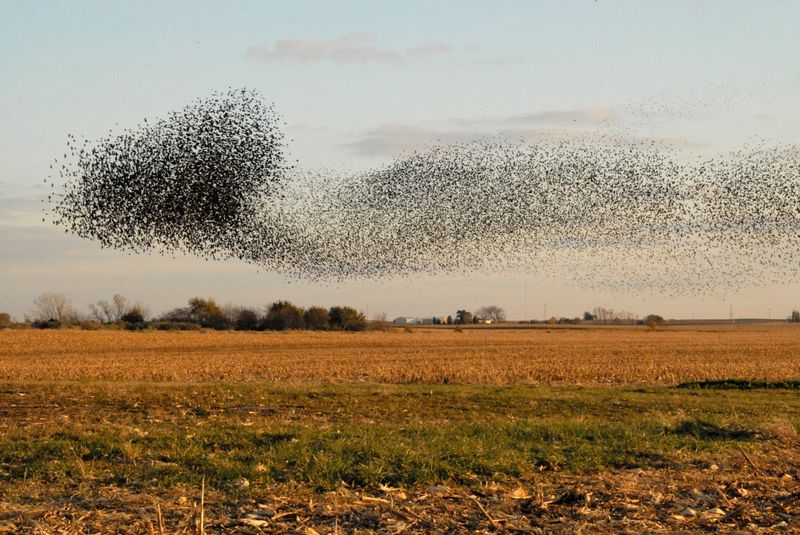
The European Starling, with its iridescent feathers and mesmerizing murmuration displays, captivates onlookers across continents. Originally introduced to North America in the 19th century, this bird quickly adapted to local environments, thriving in both urban and rural areas. Their uncanny ability to mimic sounds, from car alarms to human speech, makes them a charismatic invader. However, their aggressive nature often displaces native bird species. Did you know? A group of starlings is known as a murmuration, a sight that’s both mesmerizing and a little eerie as they move in sync across the sky.
Burmese Python
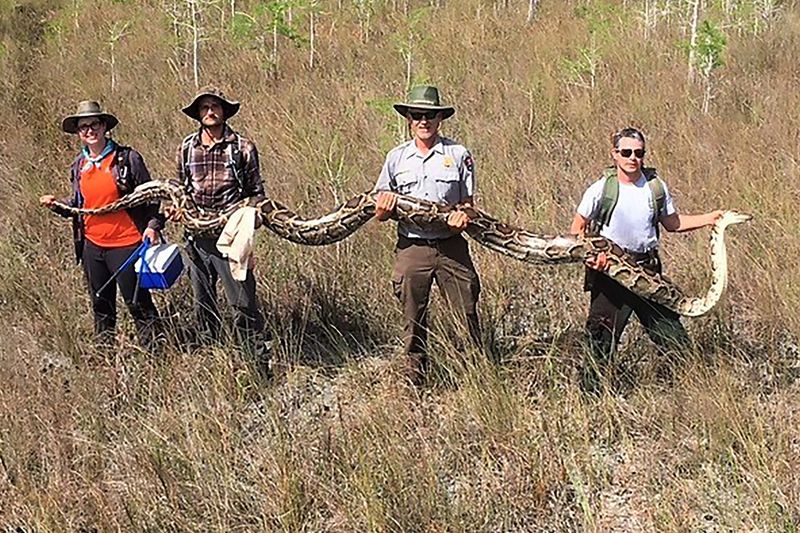
Slithering silently through the Florida Everglades, the Burmese Python is both a marvel and a menace. Originally from Southeast Asia, these snakes became popular pets, but many were released into the wild, leading to a population boom. Their impressive size, reaching up to 18 feet, and their voracious appetite have drastically impacted local wildlife. Pythons prey on mammals and birds, often outcompeting native species. A chilling fact: these snakes have been known to eat deer whole, showcasing their immense hunting prowess and adaptability in a new environment.
Cane Toad
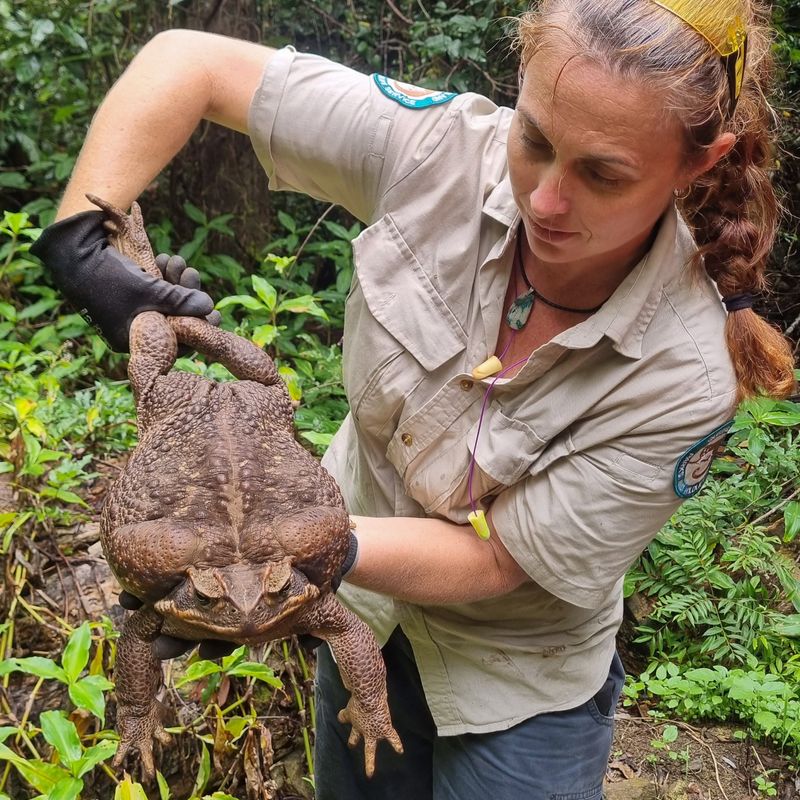
Introduced to Australia in the 1930s to control sugar cane pests, the Cane Toad has become an ecological nightmare. Rather than solving pest issues, they multiplied rapidly, their toxic skin posing a threat to native predators. This resilient amphibian thrives in various habitats, from rainforests to urban gardens. Their distinctive call fills the night air, a reminder of their enduring presence. Interestingly, the Cane Toad’s toxin has been studied for its potential medicinal properties, turning this invader into a subject of scientific fascination amidst environmental concern.
Asian Carp
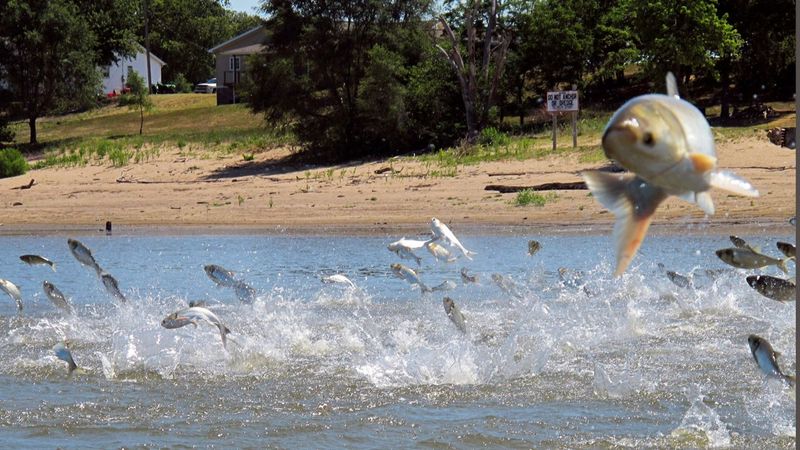
With a powerful leap, the Asian Carp makes its presence known in American waterways. Originally imported to control algae growth in fish farms, these carp escaped into rivers, where they now pose a threat to native aquatic life. Known for their voracious feeding habits, they can consume large amounts of plankton, disrupting the food chain. Their tendency to leap out of the water when startled poses risks to boaters. Despite their invasive nature, some see these carp as a potential food source, sparking debates on how to manage their populations sustainably.
Grey Squirrel

Bounding through city parks and forests, the Grey Squirrel is a familiar sight in many parts of the world. Originally from North America, they were introduced to Europe, where they outcompete the native Red Squirrel for resources. Their adaptable diet and ability to thrive in urban environments have contributed to their success. These squirrels are often seen darting across roads and scampering up trees, their bushy tails trailing behind. A curious tidbit: these squirrels are known to ‘fake bury’ food to throw off potential thieves, showcasing their cunning nature.
Feral Pig
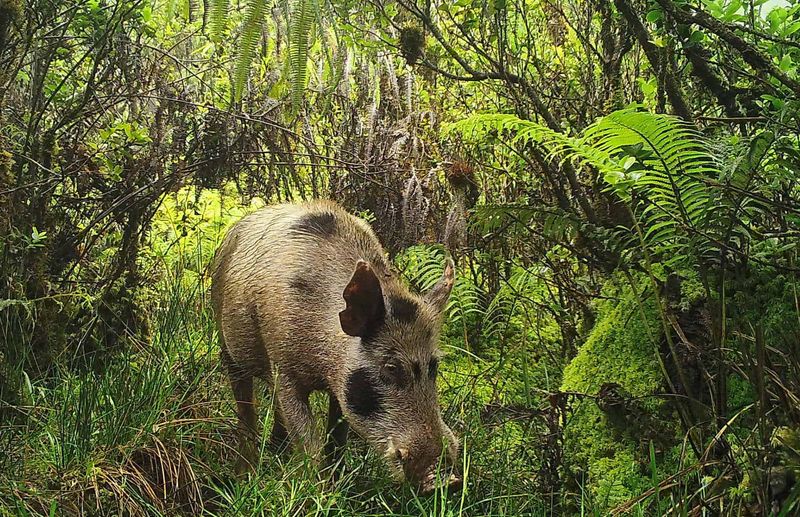
Rooting through forests and fields, the Feral Pig has become a widespread problem in several regions. Originally domesticated, these pigs either escaped or were released into the wild, where they’ve thrived. Their ability to reproduce quickly and adaptability to various environments have led to significant ecological impacts. Known for their destructive foraging habits, they can cause extensive damage to crops and natural habitats. Despite their reputation, feral pigs are sometimes hunted for sport and food, contributing to local economies while also posing a management challenge.
House Sparrow
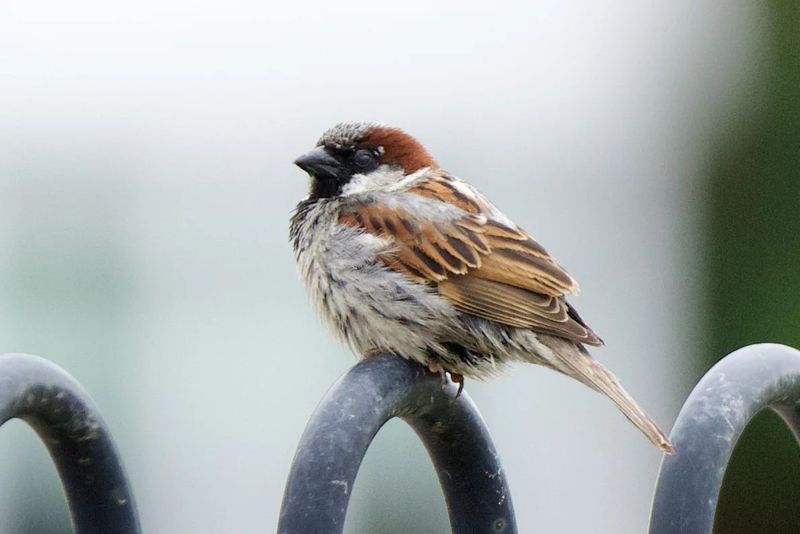
Chirping cheerfully, the House Sparrow is a ubiquitous presence in many urban settings. Native to Eurasia, they have spread worldwide, often living in close proximity to humans. Their adaptability to various environments, from bustling cities to quiet countrysides, has facilitated their global expansion. These small birds are known for their social nature, often seen in flocks around human habitation. Interestingly, House Sparrows have been a part of cultural folklore, symbolizing resilience and companionship, despite their sometimes contentious relationship with other bird species.
Nutria
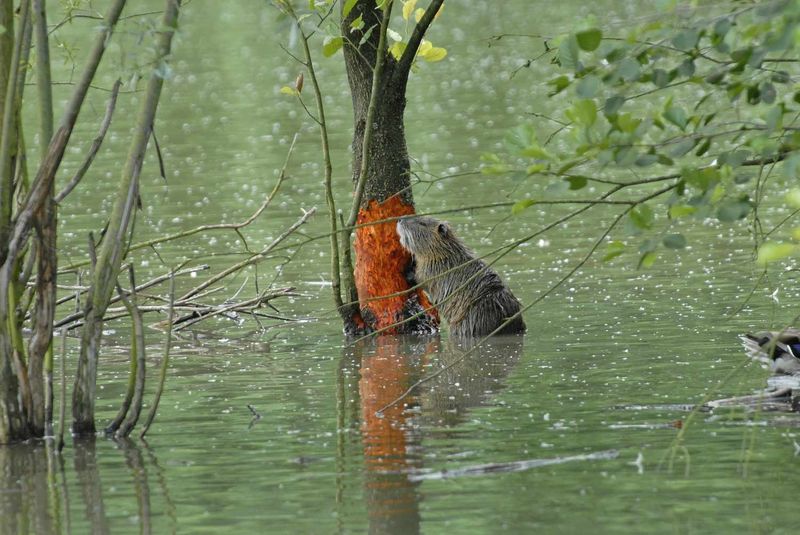
Gliding through wetlands with ease, the Nutria is an invader with a voracious appetite. Originally from South America, they were introduced to North America and Europe for their fur. However, their feeding habits can devastate local vegetation, leading to habitat loss. Nutria are easily recognized by their large orange teeth and webbed hind feet, adapted for swimming. A quirky fact: these semiaquatic rodents can close their nostrils to swim underwater, a skill that aids their survival in new territories but poses challenges for local ecosystems.
Lionfish
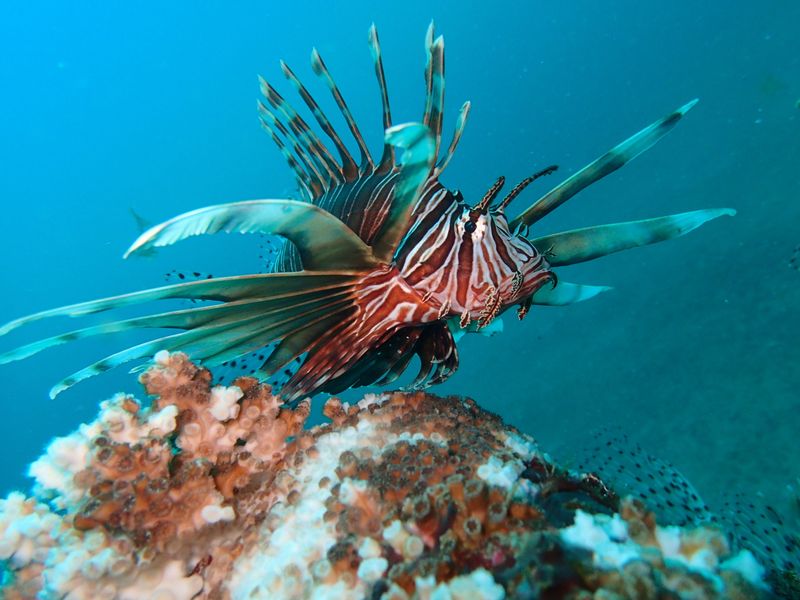
With striking spines and a flair for the dramatic, the Lionfish is a stunning yet problematic invader of the Atlantic. Native to the Indo-Pacific, these fish have spread along the U.S. East Coast and the Caribbean. Their venomous spikes deter predators, allowing them to thrive. Lionfish prey on native reef fish, disrupting delicate marine ecosystems. To combat their spread, some communities have organized lionfish hunting events, turning these invaders into culinary delicacies. Their beauty is undeniable, yet their impact on marine life is a growing concern for conservationists.
European Rabbit
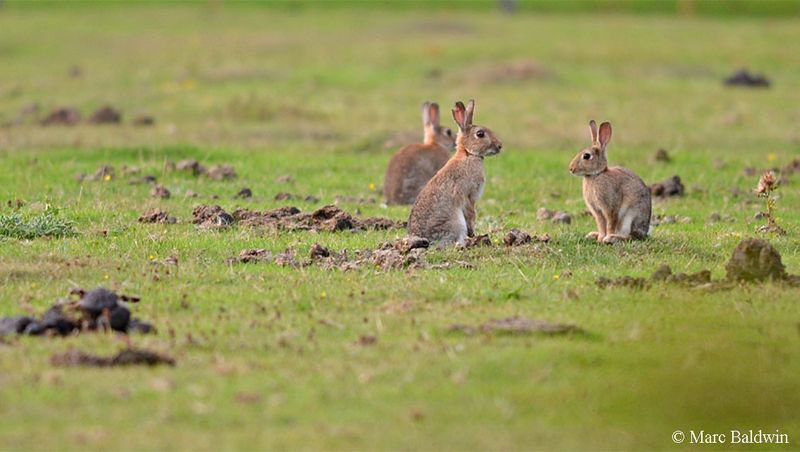
Hopping through fields and gardens, the European Rabbit is an invader that has made itself at home in various regions. Introduced for hunting and fur, their populations exploded, leading to severe ecological consequences. In places like Australia, rabbits have contributed to soil erosion and the decline of native plant species. Despite their destructive potential, rabbits are often seen as charming creatures, their twitching noses and fluffy tails endearing them to people around the world. Managing their numbers remains a challenging task for conservationists.
Red Imported Fire Ant
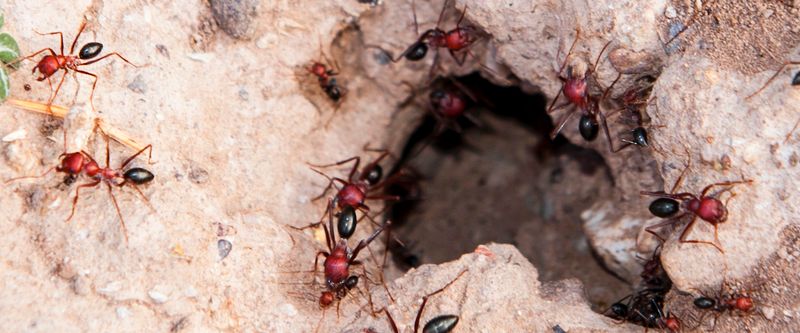
With a sting that packs a punch, the Red Imported Fire Ant has established itself as a formidable pest. Native to South America, they have spread to many parts of the world, including the southern United States. Known for their aggressive behavior and painful stings, these ants pose risks to both humans and wildlife. Their large mounds dot landscapes, often causing damage to crops and electrical equipment. Despite their negative impact, fire ants play a role in aerating soil, a small silver lining in their otherwise troublesome presence.
Common Mynah
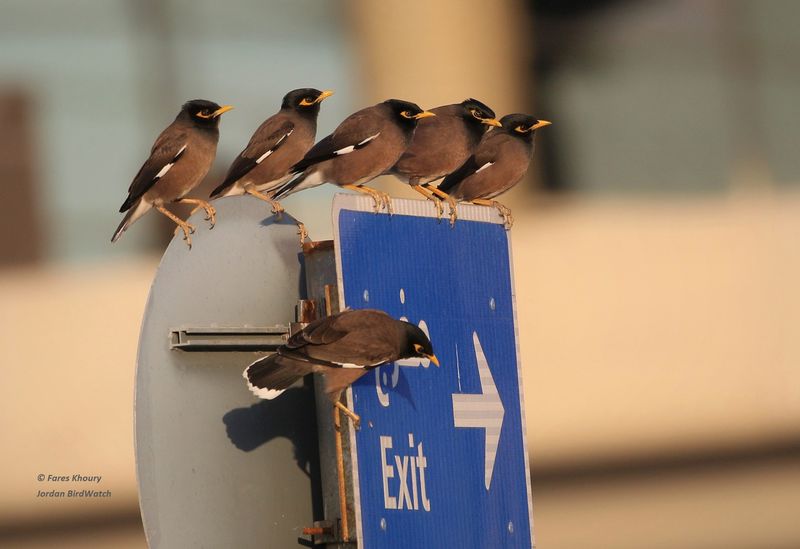
Perched on street lamps, the Common Mynah is a vocal invader that thrives in urban landscapes. Originally from South Asia, these birds have expanded their range to regions like the Middle East and Australia. Known for their adaptability and intelligence, Mynahs are skilled mimics, often imitating human sounds and other noises. Their presence in cities is both a delight and a nuisance, as they can displace native bird species. The Mynah’s ability to thrive in diverse environments is a testament to its resilience and adaptability in new territories.
Norway Rat
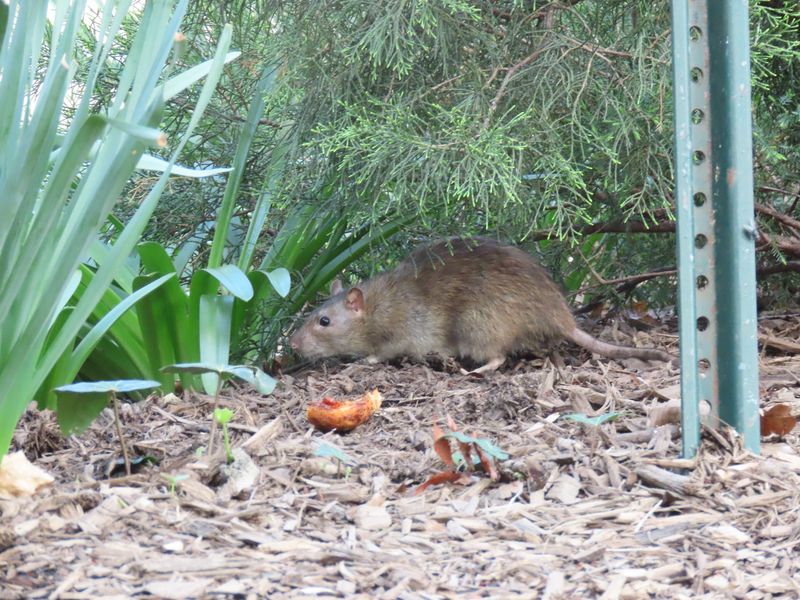
Scurrying through alleyways and sewers, the Norway Rat is an invader that often goes unnoticed until it’s too late. Native to Asia, they have spread worldwide, becoming a common pest in urban areas. These rats are known for their intelligence and resourcefulness, often finding food and shelter in unexpected places. Their presence poses health risks, as they can spread diseases. Despite their reputation, Norway Rats have been subjects of scientific research due to their cognitive abilities, illustrating a complex relationship with humans and urban environments.
Brown Tree Snake
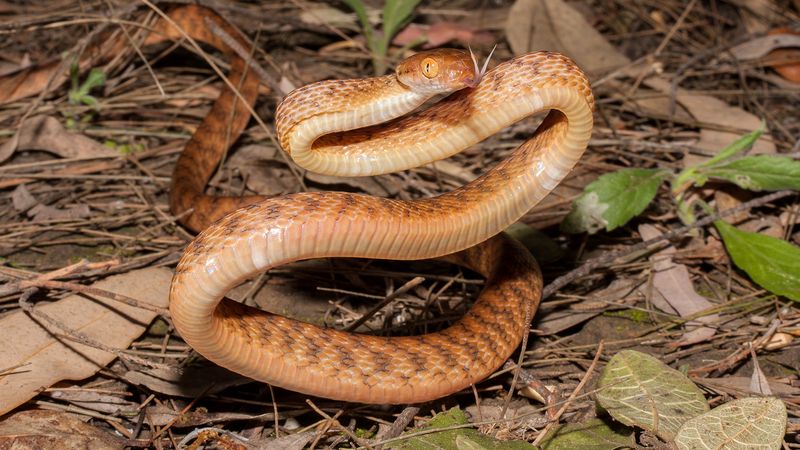
Slithering silently through the forests of Guam, the Brown Tree Snake is an invasive predator with a reputation for causing ecological havoc. Originally from Australia, these snakes were accidentally introduced to Guam, where they’ve decimated native bird populations. Their climbing skills and nocturnal habits make them effective hunters, often going undetected until damage is done. Despite their impact, efforts are underway to control their numbers, including using detectors and barriers. A glimpse of this snake is a reminder of the delicate balance between species and ecosystems.
Wild Boar
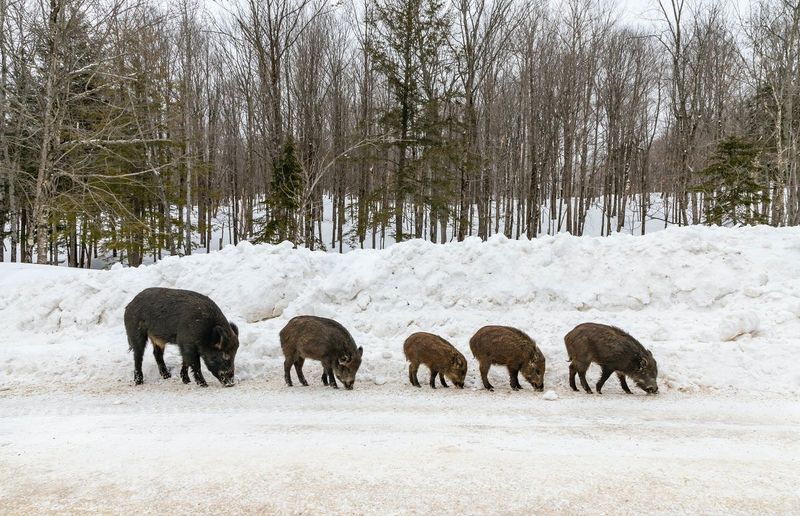
Foraging through forests and fields, the Wild Boar is an adaptable invader found in many regions. Originally from Europe and Asia, these pigs have spread to parts of North America and Australia. Known for their tough hide and sharp tusks, wild boars can be aggressive, posing threats to humans and wildlife. Their rooting behavior causes soil disturbance, leading to ecological imbalance. Despite these challenges, wild boars are often hunted for their meat, which is considered a delicacy in some cultures, highlighting the complex interplay between humans and invasive species.
Rosy Wolf Snail
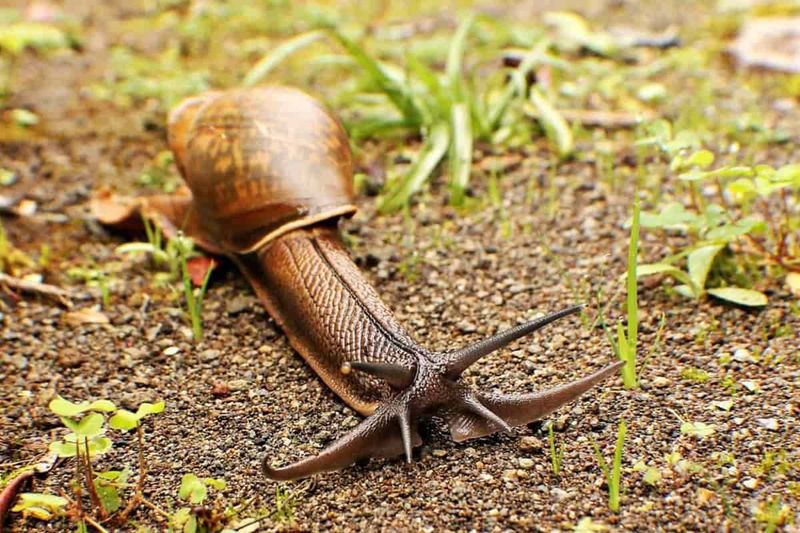
Creeping slowly through Hawaiian forests, the Rosy Wolf Snail is a predator with a taste for native snails. Introduced to control another invasive species, these snails have instead targeted native snail populations, leading to declines. Their presence has disrupted delicate ecosystems, highlighting the unintended consequences of introducing non-native species. Despite their impact, the Rosy Wolf Snail is fascinating in its own right, with a predatory nature that contrasts with its slow pace. Conservationists continue to seek solutions to balance ecological integrity with invasive species management.
African Clawed Frog
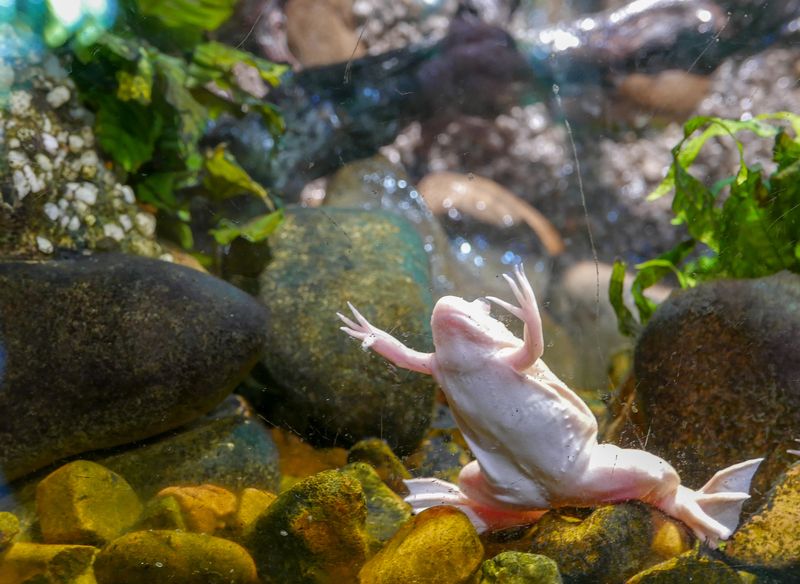
With limbs suited for both land and water, the African Clawed Frog exemplifies adaptability. Originally from Southern Africa, it found its way across the globe, often due to pet trade escapes or scientific research releases.
These frogs are voracious eaters, consuming local fauna and sometimes outcompeting native amphibians. Their robust nature means they thrive in various conditions, from urban ponds to rural waterways.
Did you know? Their name comes from the small claws on their hind feet, aiding in hunting. Their invasive presence is a challenge for conservationists worldwide, striving to protect local ecosystems.

